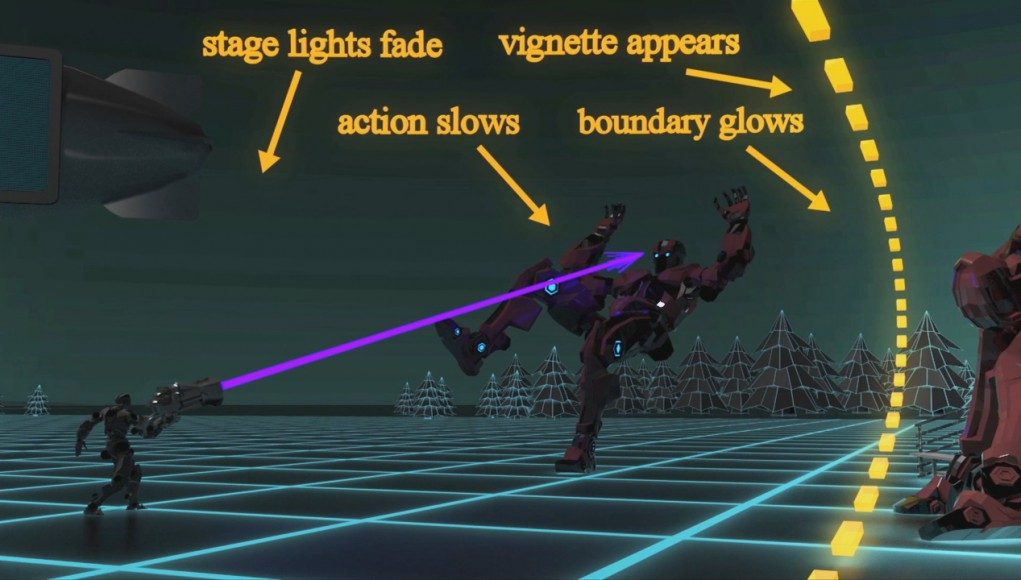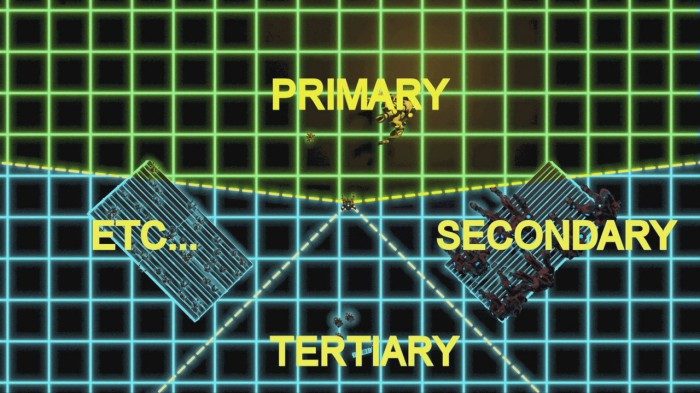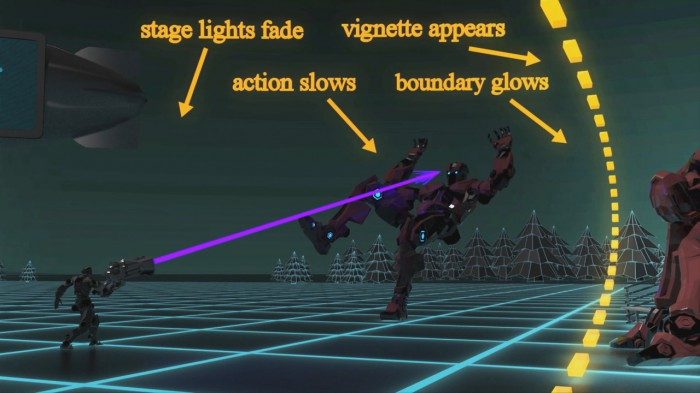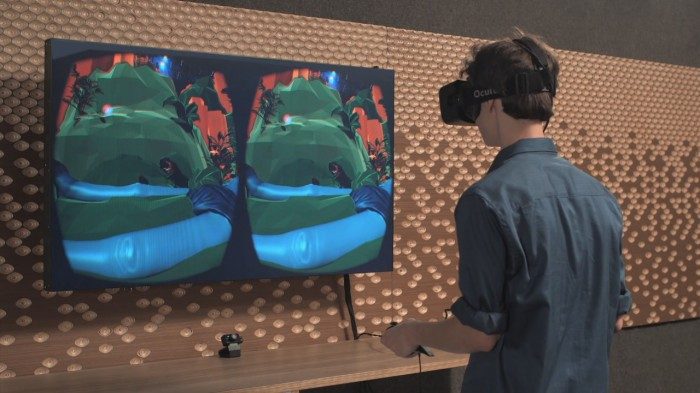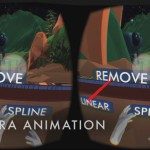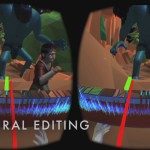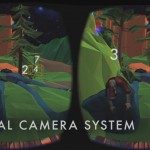Several of the founders of the VRLA Meetup are today launching Visionary VR, a technology and content development studio which is reinventing the language of filmmaking for effective storytelling in virtual reality.
The frame. It’s a simple, but incredibly powerful concept within the world of filmmaking, one that has endured for film’s history of more than 100 years. The frame is the edge of the screen, it allows directors—who can be thought of as ‘one who directs the frame’—to decide what the audience looks at, when they look at it, and for how long.
See Also: Getting Traditional Filmmakers to Think ‘Outside the Frame’ for Cinematic VR
After 100 years of working within the frame, along comes virtual reality—an experience that allows users to look around an environment in 360 degrees, in the process taking the power of direction back from the director. How can VR filmmakers reconcile direction without film’s most fundamental concept? It’s a challenge that the pioneers of VR filmmaking have been working on, and one that Visionary VR believes it has solved.
Visonary VR was created by some of principals of the VRLA Meetup, the same folks that brought us the Proto Awards. The core team includes Jonnie Ross, Gil Baron, Adam Levin, Cosmo Scharf and Luke Patterson, who say they’ve created a new framework that reimagines the concept of the frame for storytelling in virtual reality. It’s more than just an idea too, they’re working on a VR filmmaking application called Visionary Focus which puts the concept to use alongside a method of shooting films within a VR environment.
I spoke with Visionary VR co-founders Jonnie Ross and Gil Baron to learn more about the company’s vision for the future of virtual reality storytelling.
Reinventing the Frame for VR
“Passive and interactive have equal value as far as entertainment… we love watching movies every bit as much as we love playing video games so it’s not fair to say one is better than the other. So we set out to create a system to allow for both and everything in between,” Ross said.
Visionary VR’s concept of a virtual reality frame involves dividing VR scenes into discrete parts, encompassing a primary viewing area where the most important action of the scene is present, followed by sub-sections where additional—but perhaps not essential—action occurs. Each segment of the scene can independently be passive (a view-only scene) or active, when the user might impact the outcome or even be able to walk freely around the environment.
“We wanted a system that would bring to virtual reality the same freedom of choice that we enjoy in actual reality—while allowing creators to define what types of experiences happen where, and in what balance. So that’s what we set out to build,” Ross told me.
When a user looks across one region to another, it’s communicated to them that they are doing so—with what Visionary VR calls ‘boundaries and sensory cues’—using a number of methods, even going so far as to have the action in the defocused region slow down and eventually come to a hault. As the user looks away to other regions, the action in those scenes becomes active. Upon looking back to the primary scene, the action will resume without the user having missed anything. In this way, the director of a VR film can make sure that every user sees the same content and doesn’t end up missing important content just because they wanted to look at something of interest elsewhere in the scene.
“…all the stories we’ve been told until now have come wrapped inside a frame—some kind of contained division between what’s considered ‘on-stage’ and ‘off-stage’—and this frame is fundamental to storytelling itself,” Ross said. “So once we merged the idea of the frame with this idea of choice, we were able to prove to ourselves that the frame itself could be re-invented for VR and become the mechanism for both storytelling and the ability to choose between types of experiences”
If you’ve ever seen a play, you’ve probably seen something nearly similar to Visionary VR’s concept: you’re looking into cutaway rooms of a house as parents in the kitchen are in a heated discussion regarding important matters of the household; moments later, the lights in that room go down and the characters stop talking—two rooms away, the lights come up on a child and his toybox, buzzing a toy airplane about while talking to an imaginary friend; then once the dialogue is delivered, the lights turn off and the boy freezes; the kitchen is once again illuminated while the characters there continue without being ‘aware’ that the audience’s ‘gaze’ had shifted from one region of action to another.
In the timeline of the play, it’s all happening at once, but the method allows the play director to show the audience multiple scenes without them missing out on one over the other. Visionary VR’s concept is similar, but the viewer gets to do the directing by deciding what they want to focus on and when; by automatically pausing certain regions, the director can be sure that the viewer won’t miss anything important, even if they can’t control when and where a user looks.
I asked Ross if the concept was just a ‘patch’ for the early days of VR cinema or a broader framework for the future of storytelling in VR.
“It’s absolutely a framework for the future of the medium,” he said.” A foundational solution for not just how we can enjoy and be present in long-form VR movies but also a method for how passive and interactive experiences can co-exist and enrich one another.”
“The viewer experience of content through our boundary system is a language that is applicable to everyone. We put people into our experience that have never even tried VR before and they picked up the convention without explanation—for us that was the true test of whether or not this was viable,” Ross told me.
Applying the Concept with Visionary Focus
Visionary VR isn’t just putting this stuff out into the ether, they’re building software called Visionary Focus to make it easy for VR filmmakers to implement their vision of the VR frame. Visionary VR co-founder Gil Baron fills me in.
“We started with a conceptual crack. Something that would solve the problems of storytelling and attention management in VR,” Baron said. “Along the way, we discovered that our solve for storytelling also spoke to a solution for information delivery in VR. To put our concepts into practice we designed and built a toolkit to enable storytelling in VR, because none existed. Right now [Visionary Focus] a prototype of a much larger idea.”
Visionary Focus allows a director to actually step into a virtual reality scene, define the discrete viewing regions, place virtual cameras, and even build out the narrative timeline, all using immersive tools like the Oculus Rift VR headset and Razer Hydra motion controller.
“…so far in our prototype an animated scene in Unity can be edited and filmed like a movie, from inside VR,” said Baron. “This happens in real time. It’s a crazy-fast way to shoot a movie; one of those VR moments you have to see for yourself to believe. For this first iteration, we focused on proving out the conceptual core of the software. That being said, we’re planning to implement features that take the tool way beyond simply filming and editing a scene.”
Baron says that Visionary VR’s concept of the VR frame can (critically) also extend to live action VR storytelling.
“For the moment, we’ve focused on a fully animated experience because it was the shortest path to proving out our core concepts,” he said. “But we’ve begun to dig into the live action side of things. We’ve got some pretty sick live action prototype ideas brewing for how everything we’re doing and going to do for animation can apply to live action and hybrids in-between. We think the implementation will be pretty mindblowing.”
So far, Visionary VR has a proof of concept application for Visionary Focus and even a CG short film called David & Goliath, which the company says is the first piece of content created using the Visionary Focus software to direct and shoot a CG scene from within VR. I’m looking forward to checking out Visionary Focus and David & Goliath to see if Visionary VR have really cracked the code to storytelling in VR cinema. For now there’s no word yet on when the public will be able to check out the system of the first experience created with it, but we’ll keep you posted.

